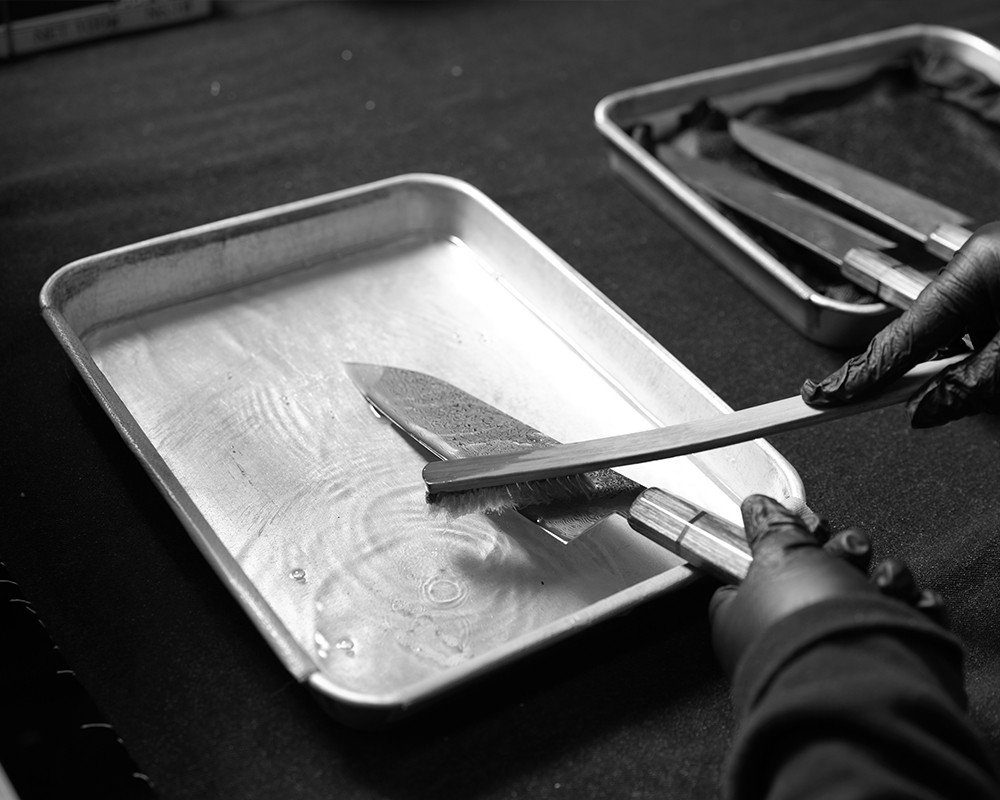Ultimate and Eternal Sharpness
Production Process
Production
Process
- Selection of ideal blade materials to meet customer's situation
- Adjusting hardness at hardening and tempering to bring out the best potential of each materials
- Impeccable shape (every knives from us are supposed to be used comfortable. From the
design stage,we consider the shape to fit the purpose of the knife. We finish impeccable shape without distortion for any kinds and any lot of knives) - The blade is sharpened to an R shape and adjusted to a uniform thickness so that the chef’s knife can cut smoothly into the foods, and it can be sharpened to appropriate edge when resharpening.
- Rust-resistance-surface-finish (If unevenly polish or leftover original surface after sharpening remains on the blade, they are most likely to cause rust)
- Handle finish for comfortable grip (From the design stage, the handle is also considered the shape to grip with no stress. Craftsmen grind, polish and finish carefully in accordance with the drawing.
- Edge sharpening to produce ultimate sharpness (you can cut into foods with less resistance)
- Uncompromising quality control (All manufacturing process is always controlled quality strictly according to inspect with detail.)
- Quality will be determined on technique, intuition and experience for craftsmen at each process.
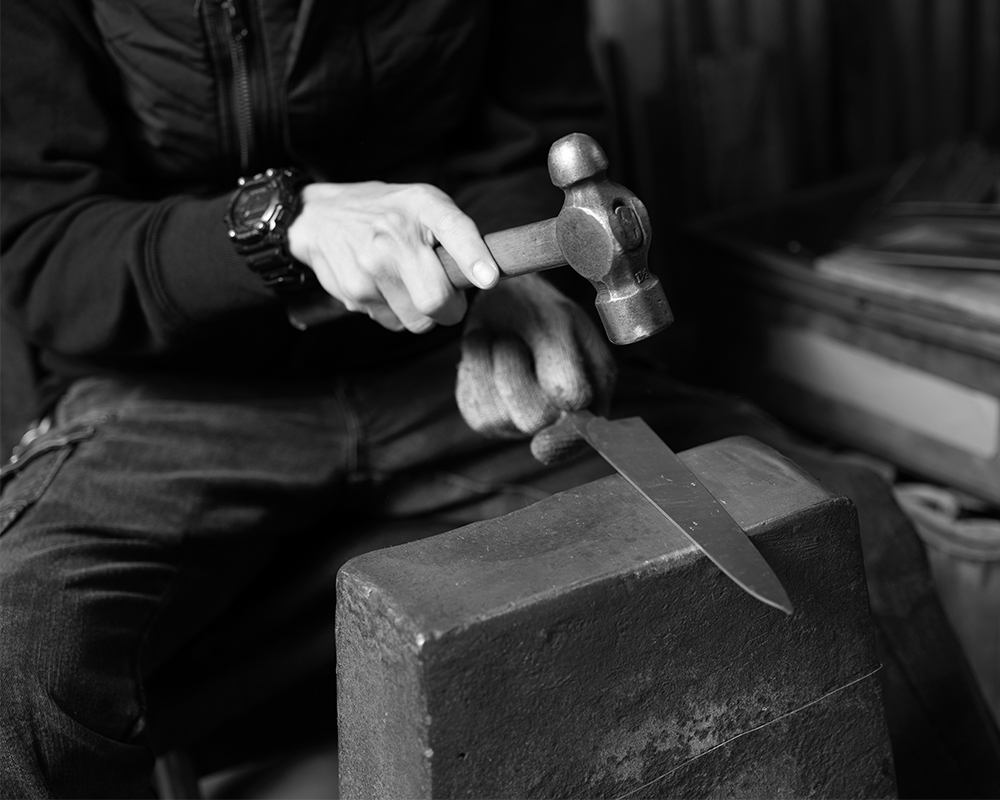
Heat Treatment & Straightening
The hardness needed for knife’s steel is not enough yet after press punching. For that reason, the blade has to be hardened (Heated) and tempered in order to give sharpness, strongness, flexibility and durability. As you know, sharpness is the biggest part of knives. For the sharpness, it has to be hardened. For making the best use of the materials, the knives are increased degree of hardness. Hardening will bring out the maximum hardness that the steel can produce. On the other hand, if it is only harden, it is easy to break. Tempering is required for giving durability and flexibility. This is a process that maximizes the potential of steel materials. (It can be the base of the ultimate and eternal sharp blade.) Hardening and tempering will distort blades. Hence, the knives are straightened up by using a hammer or a chisel. We need to get it straightened out at this process because it will affect later processes. Otherwise it causes unevenness when sharpening. Unevenness blade means the blade thickness is different from place to place on the blade. That means it is difficult to resharpen and does not cut into foods smoothly.
Forming Sharpening
After heat treatment and straightening, the blades’ thickness is reduced to approximate thickness by automatic grinding machine. There is a lot of unevenness if it is only automatic grinding machine. Therefore we check blade unevenness thickness one by one, and make it correct by hand. Simultaneously, the blade surface is shaved off from the spine (Mine) to the cutting edge (Tip) in an arc by a big whetstone. It is called a clam blade because of its clam-like shape. The blade is made to be strong and cut into foods smoothly. The blade is shaped an ideal blade by shaving off gradually while confirming surface and edge. This is an important process that determines the sharpness and strongness of the knife and requires the skill of the craftsmen. This process is indispensable for the production of high quality chef’s knives.
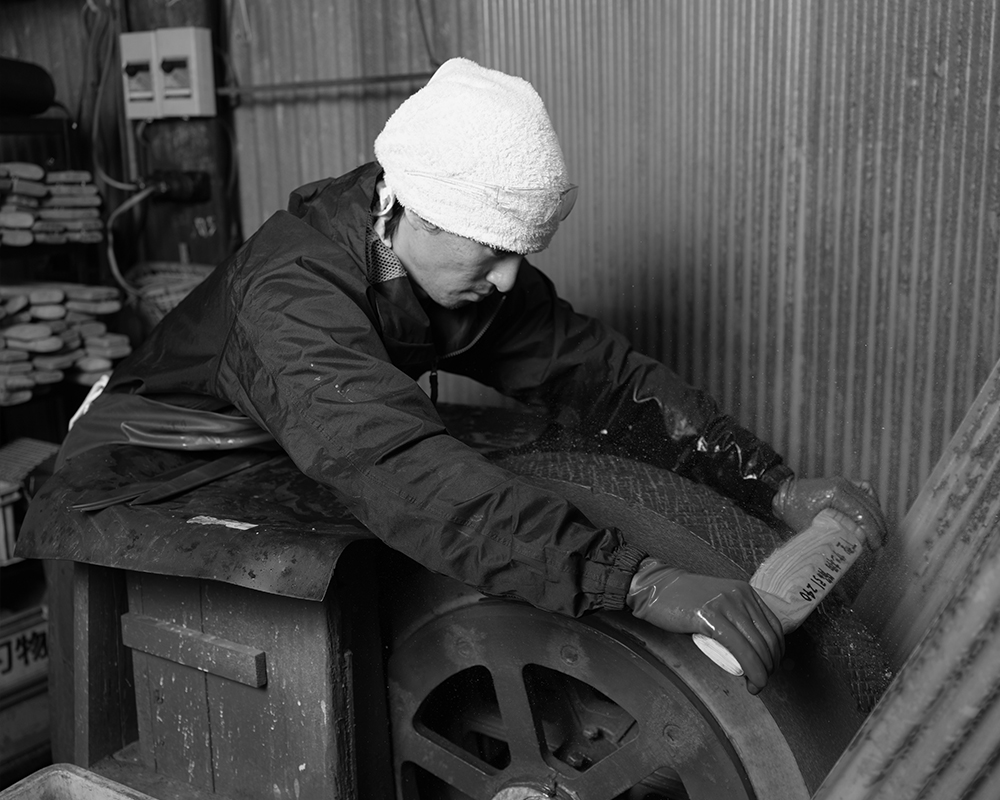
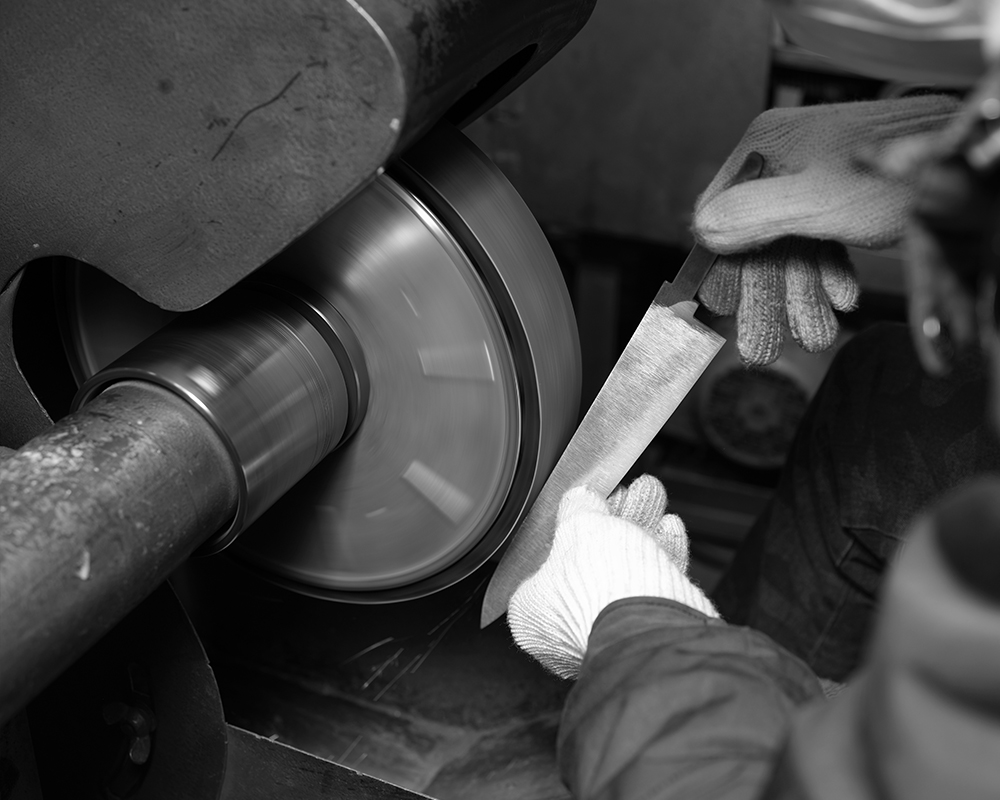
Polishing The Spine and The Blade Surface up
Press punching generates burr on the blade or dull the corner of a knife. The spine (Mine) is scraped by using a sandpaper to remove the burr. The press-extracted knife has a rounded cutting edge. The cutting edge is shaped to the right form by sandpaper or a sharpening stone. To make the edge and the tip sharp, this step is necessary. Also the entire knife can be properly shaped by polishing spine. At the same time, the blade is polished finely. Several buffs with different grits are used to gradually produce a fine-grained finish. Depending on a type of knives, a hairline or a sand buff finish is applied.
Attaching The Handle to The Blade
For wood handles, a blade and a handle are fixed with caulking rivet. To remove the difference in level between a handle and a caulking rivet, we use sandpaper or a buff. Using a number of different types of sandpaper and buff, this work is repeated to create a beautiful and comfortable handle. At this process, the handle is given comfortable grip and high level of safely. For resin handle, we use molding machine to attach a handle to a blade.
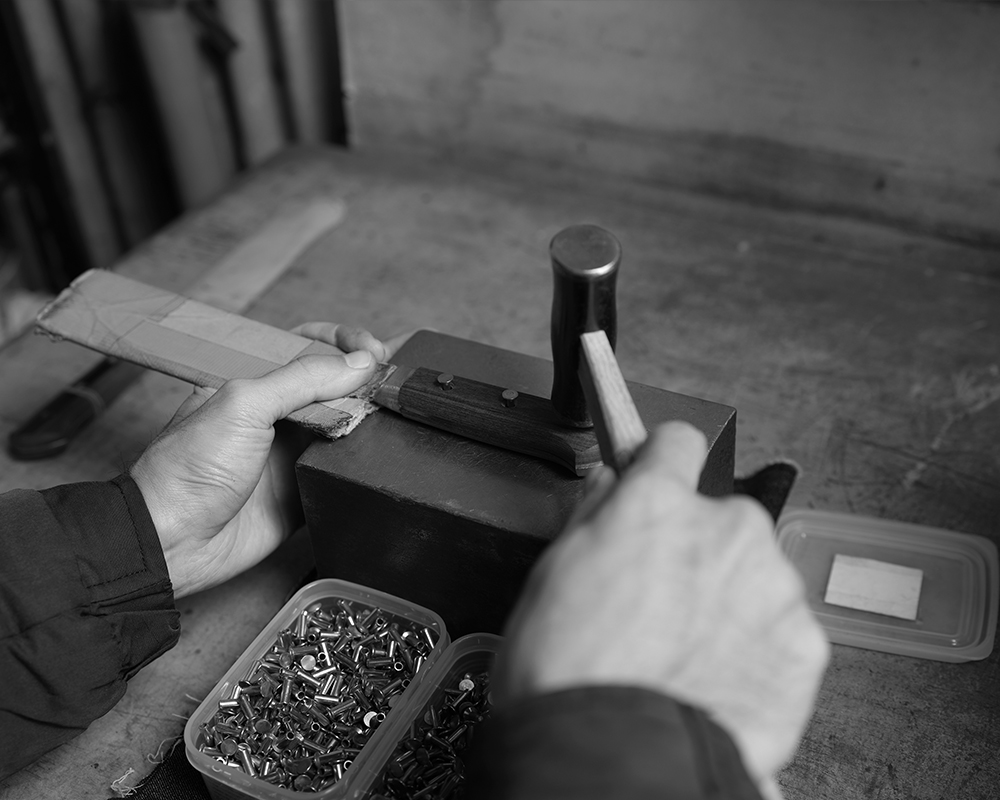
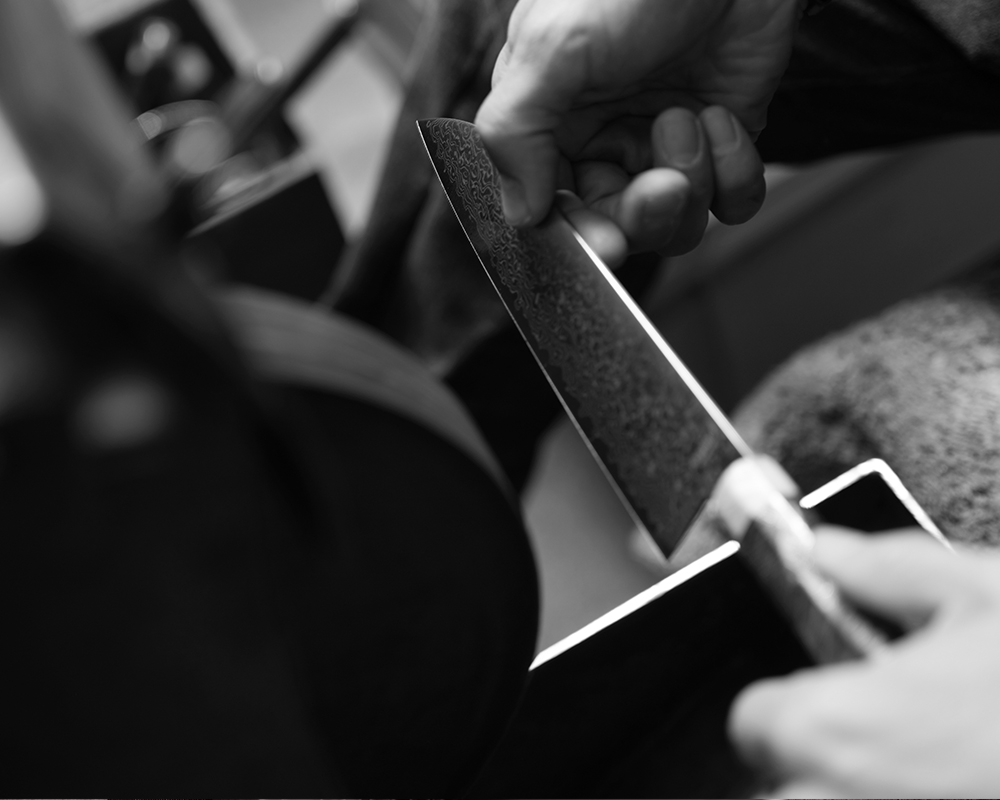
Final Sharpning
No matter how high quality materials are used, how advanced the tempering is, or how well the knives is polished and sharpen by first-rate craftsmen, the knife will not be sharp enough as long as final sharpening is not properly. We adjust the grit of sharpening stone and the blade angle depending on the knife’s intended use, and the blade will be finished to delicate edge.
Cleaning/Inspection/Wrapping
At final process, each knife is carefully cleaned, inspected, and packed. Kitchen knives found to be defective during inspection are returned to appropriate process for rework and correction to be finished into proper knives. This is the final process of manufacturing and is an important process for maintaining quality.
